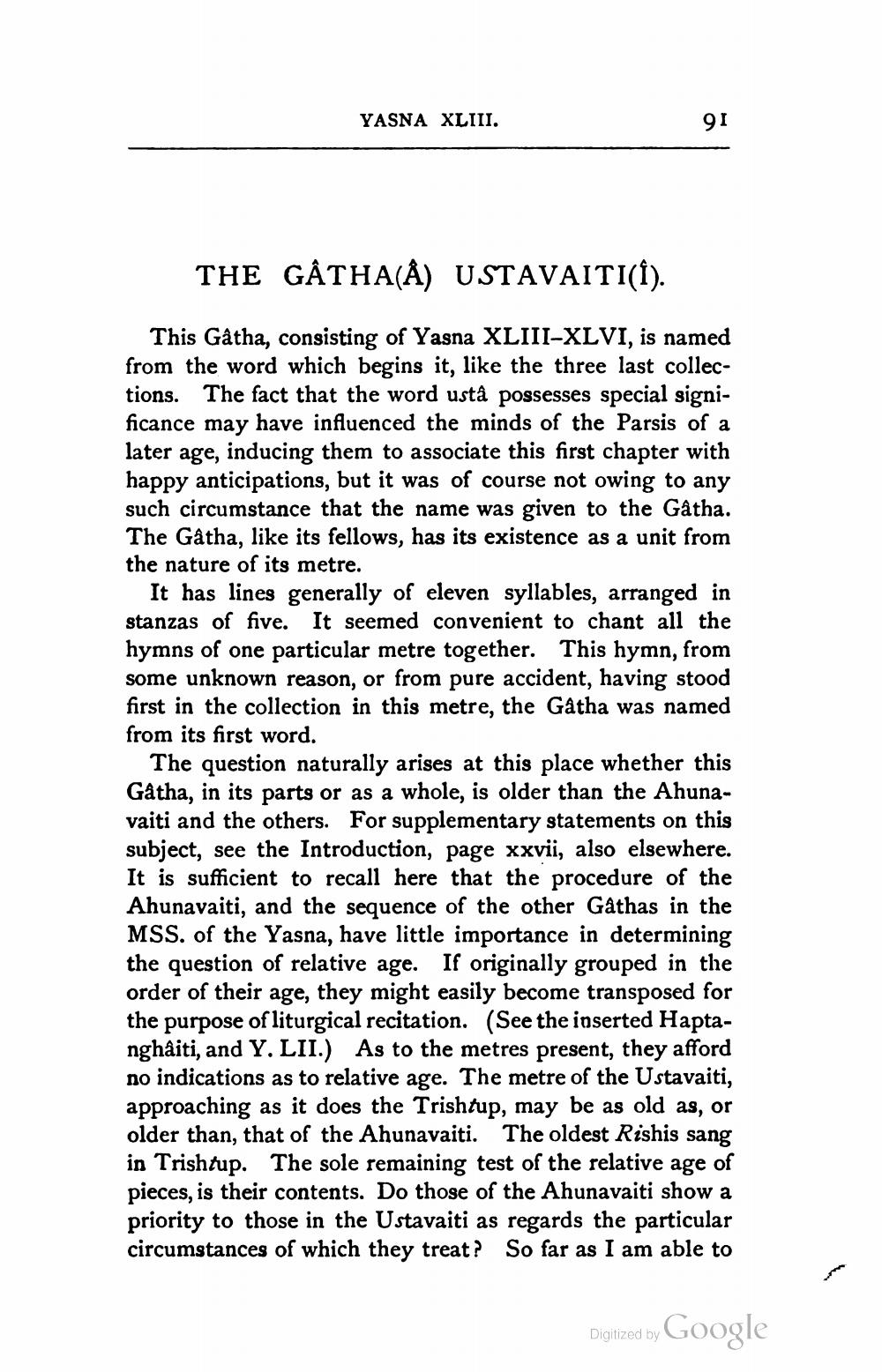________________
YASNA XLIII.
90
THE GÂTHA(Å) USTAVAITI(I).
This Gâtha, consisting of Yasna XLIII-XLVI, is named from the word which begins it, like the three last collections. The fact that the word ustå possesses special significance may have influenced the minds of the Parsis of a later age, inducing them to associate this first chapter with happy anticipations, but it was of course not owing to any such circumstance that the name was given to the Gåtha. The Gatha, like its fellows, has its existence as a unit from the nature of its metre.
It has lines generally of eleven syllables, arranged in stanzas of five. It seemed convenient to chant all the hymns of one particular metre together. This hymn, from some unknown reason, or from pure accident, having stood first in the collection in this metre, the Gatha was named from its first word.
The question naturally arises at this place whether this Gåtha, in its parts or as a whole, is older than the Ahunavaiti and the others. For supplementary statements on this subject, see the Introduction, page xxvii, also elsewhere. It is sufficient to recall here that the procedure of the Ahunavaiti, and the sequence of the other Gathas in the MSS. of the Yasna, have little importance in determining the question of relative age. If originally grouped in the order of their age, they might easily become transposed for the purpose of liturgical recitation. (See the inserted Haptanghaiti, and Y. LII.) As to the metres present, they afford no indications as to relative age. The metre of the Ustavaiti, approaching as it does the Trishtup, may be as old as, or older than that of the Ahunavaiti. The oldest Rishis sang in Trishtup. The sole remaining test of the relative age of pieces, is their contents. Do those of the Ahunavaiti show a priority to those in the Ustavaiti as regards the particular circumstances of which they treat? So far as I am able to
Digitized by
Digitized by Google




